Starting from the first grade and up, your child will be exposed to area and perimeter. Area and perimeter problems are divided into multiple types of problems but the one they will most likely see first are grid format perimeter problems.
Perimeter refers to the length of a line that encloses a shape. In other words, it’s the length of all sides of a shape. There are a variety of formulas that can be remembered to speed up the process of calculating perimeter early-on, but once your child reaches a certain stage, those formulas will actually complicate the problem and make the solution much more difficult to find. We recommend teaching them one simple method of finding perimeter:
Add all the lengths of the sides together.
This can be performed early-on when your child is just learning perimeter, and also applied in the future when they encounter much more complex perimeter problems.
Perimeter problems are subdivided into multiple categories, but since this is the first step in getting your child to become an expert in learning perimeter, we’ll go over the most basic form – grid format perimeter problems.
A grid format perimeter problem refers to a problem that has a shape with grids. Each box within the grid denotes a single unit of length. Look at the example below to get a better idea:
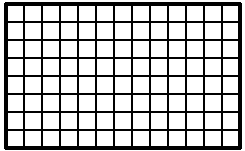
From this one example, there are a variety of questions that can be asked. We’ll go over each
one together.
Problem Type 1)
Find the lengths of all sides, and then the perimeter of the shape.
This problem has two steps that need to be completed: First, the length of the sides needs to be found, then you can use those numbers to find the perimeter.
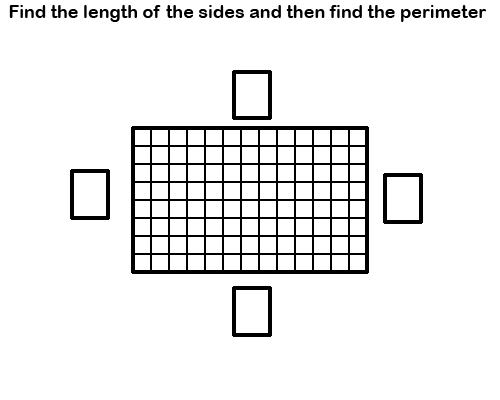
To find the length of a side when you have a grid, all you have to do is count the grid squares attached to each side. We’ve colored the corners with 2 colors to show that they apply for the lengths of both sides they are attached to.
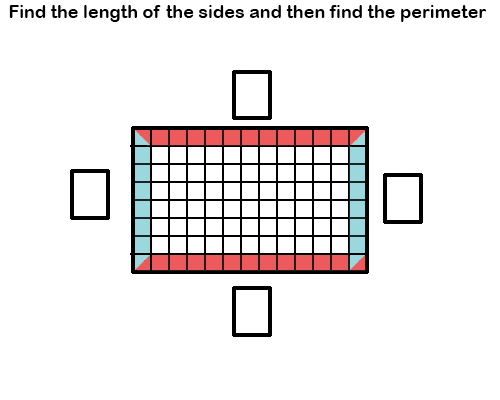
Once you finish counting, then you should have the length of each side
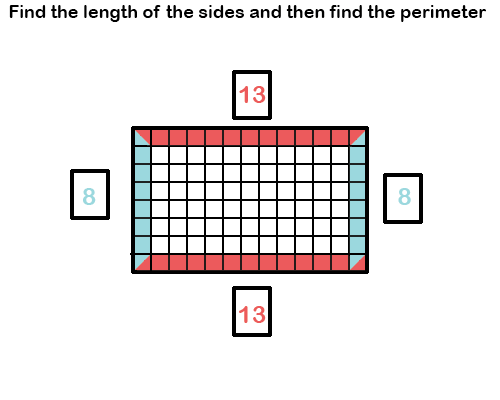
Now you just take each length and all them all together.
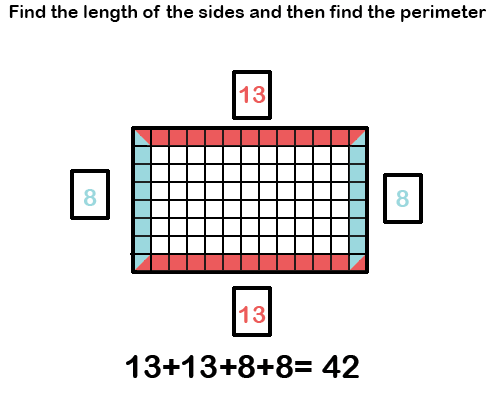
Problem Type 2) Missing Length Perimeter Grid
Find the length of the missing side, then find the perimeter of the shape.
This problem differs slightly from the first problem type in that you are given some of the side lengths, but not all. The common approach most people take to this is “The lengths of the horizontal lines are equal, and the lengths of the vertical lines are equal” which is actually an ideal approach as it will help to set your child up for more difficult problems in the future.
This problem, like the one above, has two steps: first, find the length of the missing side, and then you can find the perimeter.
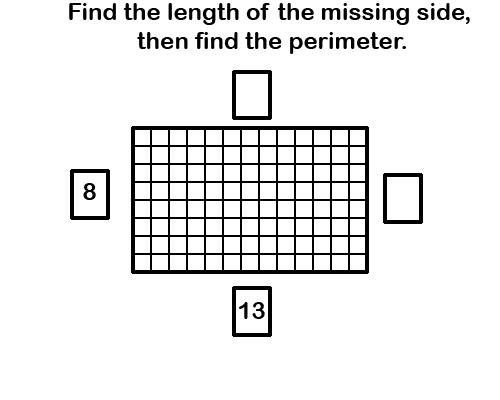
Your child can take two approaches here:
- Count the grid boxes and find the length of the side (like we did above)
- Use the equal sides rule
Since we’ve already covered how to do approach one, let’s look at approach 2 in this problem.
Because we know this shape is a rectangle, and rectangles have equal heights and lengths, we can apply that knowledge to define the missing lengths.
We are given a height of 8 and a length of 13, so we know the missing height and missing length should also be the same respective numbers, giving us this solution below:
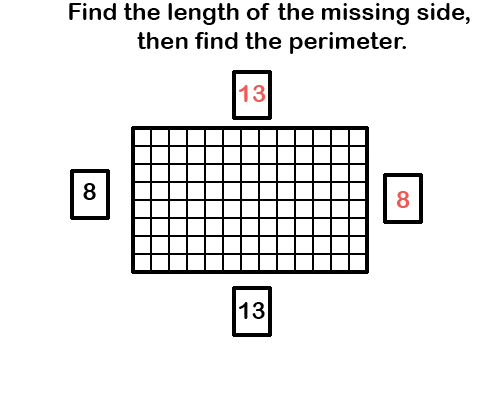
Then we follow the same steps by adding up the lengths of all sides, and we should find our perimeter
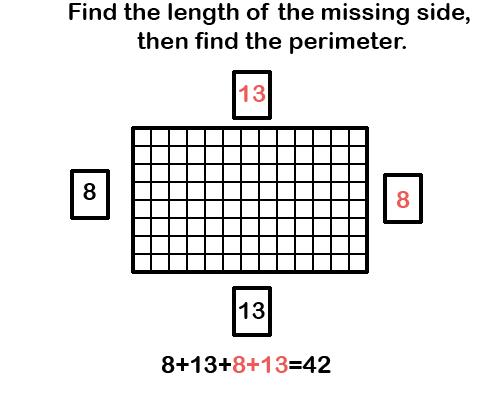
Problem Type 3) Just Finding Perimeter
The last problem is relatively simple compared to the other two. The problem is already set up so that your child has the length of all sides and they would just need to add up all the length values to find the perimeter.
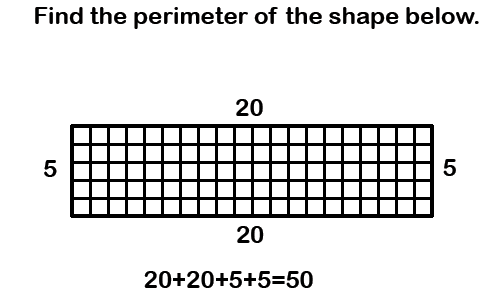
Perimeter problem types are not just limited to the ones we have shown here. Over the course of the next few blog posts, we’ll be posting about more difficult and complex perimeter problems.
Check out our worksheet below for more practice with your child!

